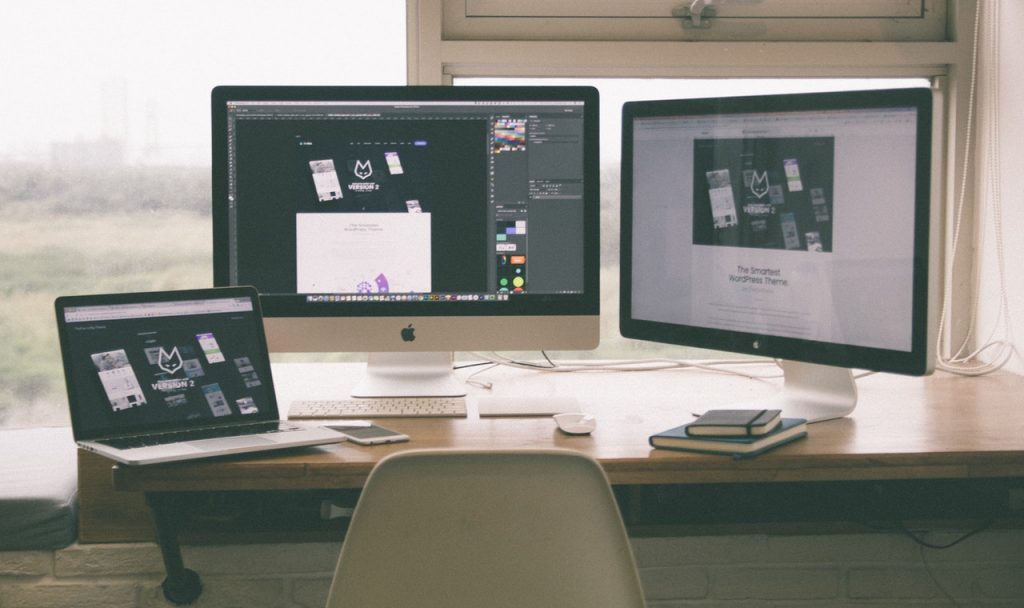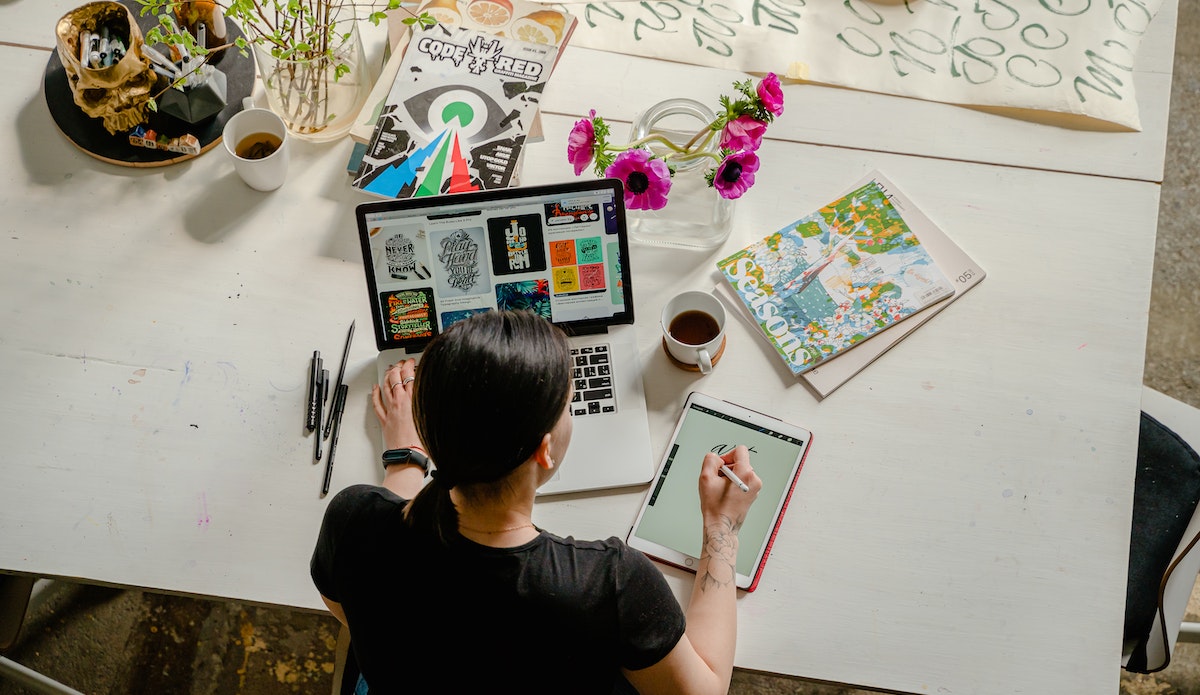Graphic design is an exciting field that offers endless opportunities to showcase your creativity and express your ideas. Whether you’re designing a logo, an advertisement, or a website, the goal is to make information easy to understand. As a beginner in graphic design, navigating the many aspects of the field can be overwhelming. Still, anyone can become a skilled designer with the right tips and techniques.
To succeed as a graphic designer, you must possess technical and creative skills. This article will look at seven crucial visual design tips for beginners to help you achieve your objectives. These tips will provide valuable guidance on your graphic design journey, whether starting or looking to improve your existing skills.
Table of Contents
1. Identify Your Strength
The discipline of graphic design comprises various subfields and approaches to visual communication. It would be helpful to research and identify what field suits your skills the best. Varieties of graphic design include:
- Branding and Identity Design: This type of design is all about making logos, business cards, and other marketing materials that show how a company or group looks.
- Advertising Design: People use this design to promote products, services, or ideas through various means, such as print ads, billboards, and online ads.
- Web Design: This design involves creating user-friendly and visually appealing websites, including the layout, typography, and color scheme.
- Infographic Design: This design involves visual representations of information and data using charts, graphs, and other visual elements.
2. Choose the Right Material
As a graphic designer, having access to high-quality images and photos is essential for developing visually appealing designs. One option is using stock photos and pre-made images licensed in design projects. A huge advantage of stock photos is that you have a massive collection to pick from. When choosing images, it’s essential to consider the purpose and message of the design, as well as the target audience.
For example, choose images of houses, neighborhoods, and other real estate-related subjects if you’re designing a brochure for a real estate company. Additionally, it’s essential to ensure that your images are of high quality, with good lighting and sharp focus, as these will help make your designs look professional and polished.
3. Choose Your Software
Graphic design software is crucial. Beginner-friendly and professional software are available. Adobe Illustrator, Canva, GIMP, and Inkscape are beginner-friendly. Adobe Illustrator, a vector-based software used in the industry, has many tools and features for creating illustrations, logos, and other design elements. Canva, an online graphic design tool, provides users with various customizable templates to get their designs started. Free and open-source GIMP has several functionalities found in Photoshop. Another open-source and accessible option for novices working with vector graphics is Inkscape. These graphic design software options are a good start for beginners, but your choice will depend on your needs and project type.
4. Minimalism
Minimalism is a popular trend in graphic design that emphasizes simplicity and clean lines. The idea behind minimalism is to strip away any unnecessary elements and focus on the essentials, allowing the message to be the center of attention. Minimalistic designs often use negative space, solid colors, and simple typography to create a clean and uncluttered look. Playing with negative space, also known as white space, is a key technique in graphic design. It involves using a space to create minimalism, balance, emphasis, and visual interest in a plan.
People often view minimalistic designs as elegant and sophisticated. They can be great for logos, branding, and other designs that convey professionalism and modernity. However, it’s important to remember that minimalism is not always the best choice for every project and that sometimes a more elaborate design may be more appropriate.

5. Experiment with Typography
Typography can significantly impact a design’s overall look and feel. Experimenting with different types of typography is a great way for graphic designers to improve their skills and add variety to their plans.
One tip is to play around with different font families and styles, such as sans-serif, serif, script, and display fonts. Each font has its unique personality and can convey other emotions and messages, so it’s essential to choose the right font for each project. For example, a sans-serif font may be more modern and casual. In contrast, a serif font may be more traditional and sophisticated.
Try different font weights, letter spacing, and line heights. Minor modifications to these features can dramatically alter your design’s typography. For instance, raising the font size and lowering the line height can make text stand out and seem thicker.
6. Color Theory
The color theory uses the color wheel. The wheel’s top is red, blue, and yellow. Green, orange, and purple are created by blending basic colors. Mixing primary and secondary colors creates tertiary hues like blue-green and yellow-orange.
An important aspect of color theory is color harmony, which refers to how colors interact in a design. Graphic designers commonly use several color harmonies, including complementary, analogous, and triadic color schemes.
Complementary colors reside opposite each other on the color wheel. When used together, they make a significant difference. Next to each other are the analogous colors that make a harmonious and cohesive look. Triadic color schemes use evenly spaced colors around the color wheel and create a vibrant and energetic look.
The color theory also includes how colors affect viewers’ emotions. Red and orange suggest warmth, enthusiasm, and vitality, whereas blue and green evoke serenity, trust, and relaxation. Graphic designers can use color psychology to match their messages and tones.
7. Use Grids
A grid is a set of lines that cross each other and divide a design into columns and rows. Using a grid, graphic designers can ensure that elements are aligned and spaced evenly, making a design look more organized, balanced, and professional. Grids can also help to establish a visual hierarchy in a design, allowing graphic designers to draw attention to specific elements and communicate their message more effectively.
Using a consistent grid structure throughout a design, graphic designers can create a consistent look and feel, which can help create a solid and memorable brand identity. A grid with many columns and rows may work well for a design with a lot of content, while a grid with fewer columns and rows may work better for a plan with less content. Graphic designers should also consider the size and format of the design and choose a grid that is appropriate for the medium.
Conclusion
Graphic design is an art form that involves creating visual content for various media platforms. You can choose from multiple types of graphic design to identify your strength when starting in graphic design.
Choose suitable materials for your project, such as high-quality photos and software, to help your design stand out. Minimalism is a critical element of graphic design, focusing on simplicity and negative space to create a clean and uncluttered look. Experimenting with typography, color theory, and the use of grids can help to create visually appealing designs that are well-organized and easy to navigate. By following these tips, beginners can develop their skills and create professional-looking designs that effectively communicate their message.

Alex is fascinated with “understanding” people. It’s actually what drives everything he does. He believes in a thoughtful exploration of how you shape your thoughts, experience of the world.


